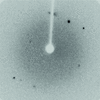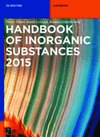issue contents
July 2016 issue

Cover illustration: A phase transition taking place at 229 K upon cooling produces twinned crystals with triclinic symmetry. Massive side-chain disorder due to steric conflict under ambient conditions is avoided at low temperature by adopting a high Z' packing arrangement with a heterogeneous mix of side-chain conformations. See Görbitz, Wragg, Bakke, Fleischer, Grønnevik, Mykland, Park, Trovik, Serigstad & Sundsli [Acta Cryst. (2016), C72, 536-543].
research papers






























book reviews



 journal menu
journal menu


































